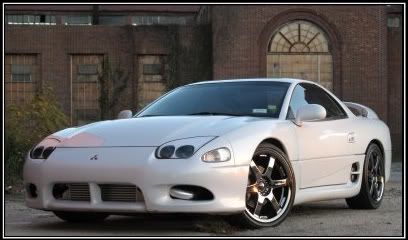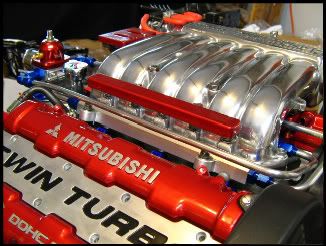Step 5: Degreeing the Cams. You must have a cam card or detailed cam specifications, in my case I was installing the Brian Crower 272 street cams. NOTE: this cam card won’t work for factory cams or any other cams for that matter. I’ve provided the cam card as an example only. NOTE AGAIN: NEVER ROTATE THE ENGINE COUNTERCLOCKWISE.
Here’s the guide to understanding the abbreviations on the cam card
INT : Intake Valve
EXH: Exhaust Valve
TDC: Top Dead Center
BDC: Bottom Dead Center
ATDC : After Top Dead Center
BTDC: Before Top Dead Center
BBDC: Before Bottom Dead Center
ABDC: After Bottom Dead Center
I.O. : Intake Valve Open
I.C. : Intake Valve Close
E.O. : Exhaust Valve Open
E.C. : Exhaust Valve Close
In the diagram in the bottom half of the cam card, it can be seen:
Timing Events Correct at 0.050” Lift , These are the values we will be using.


1.So in the general case, rotate the engine (in the correct direction) until 0.050” lift is achieved on the dial indicator. You need to note the position of the small dial (Red arrow) because this is also the point at which you will be 0.050” from closing. (this picture is just an example, obviously I'm not at 0.050" lift, I just took this picture to show what I was talking about)

2.Note the degree on the degree wheel. (as an example: at 0.050” lift on the intake cam, the degree wheel should be -7 degrees ATDC, this is the same thing as 7 degrees BTDC, I have no idea why brian crower uses the negative system)
3.Continue rotating the engine until you are 0.050” lift from closing (ie the little arrow on the dial indicator will be the same as it was for 0.050” lift after opening in step 1). DONT ROTATE COUNTER CLOCKWISE, Rotate the engine through the full strokes until valve closure occurs.
4.Note the degree on the degree wheel. (example: at 0.050” lift from closing on the intake cam, the degree wheel should be 31 degrees ABDC.
5.Repeat a few times to check your numbers are CONSISTENT (Not necessarily perfectly accurate to the cam card). If not, you have something wrong and the numbers will not be consistent, and go back to step 3 and continue forward again.
6.Now that you have your numbers, using adjustable cam gears adjust the cam timing to the correct for differences.
a.I talked to a couple of people about the best way to do this and in general the consensus is to average the differences. As an example: If you measure the intake opens 4 degrees early and the exhaust closes 2 degrees late, retard
the timing a degree such that the intake opens 3 degrees early and the exhaust closes 3 degrees late. It is believed that the inability to measure directly at the valve stem, and the requirement of the rocker arm for valve depression introduce some 'error' of measurement into the degreeing. Thus the best way is to average the error on both sides of opening and closing and this gives the best timing possible.
7. After adjustment, CHECK to make sure what you just did made the changes you expected. CHECK CHECK AND RECHECK to make sure what you did makes sense.
8.Complete on other cams. Note on the Rear cylinder bank you need to use cylinder number 4 because it is the paired sister cylinder of cylinder 1, and you will not need to reset the degree wheel. SEE Stealth 316 link in step 1.






 Reply With Quote
Reply With Quote





 w/DBB DR1000's
w/DBB DR1000's



Bookmarks